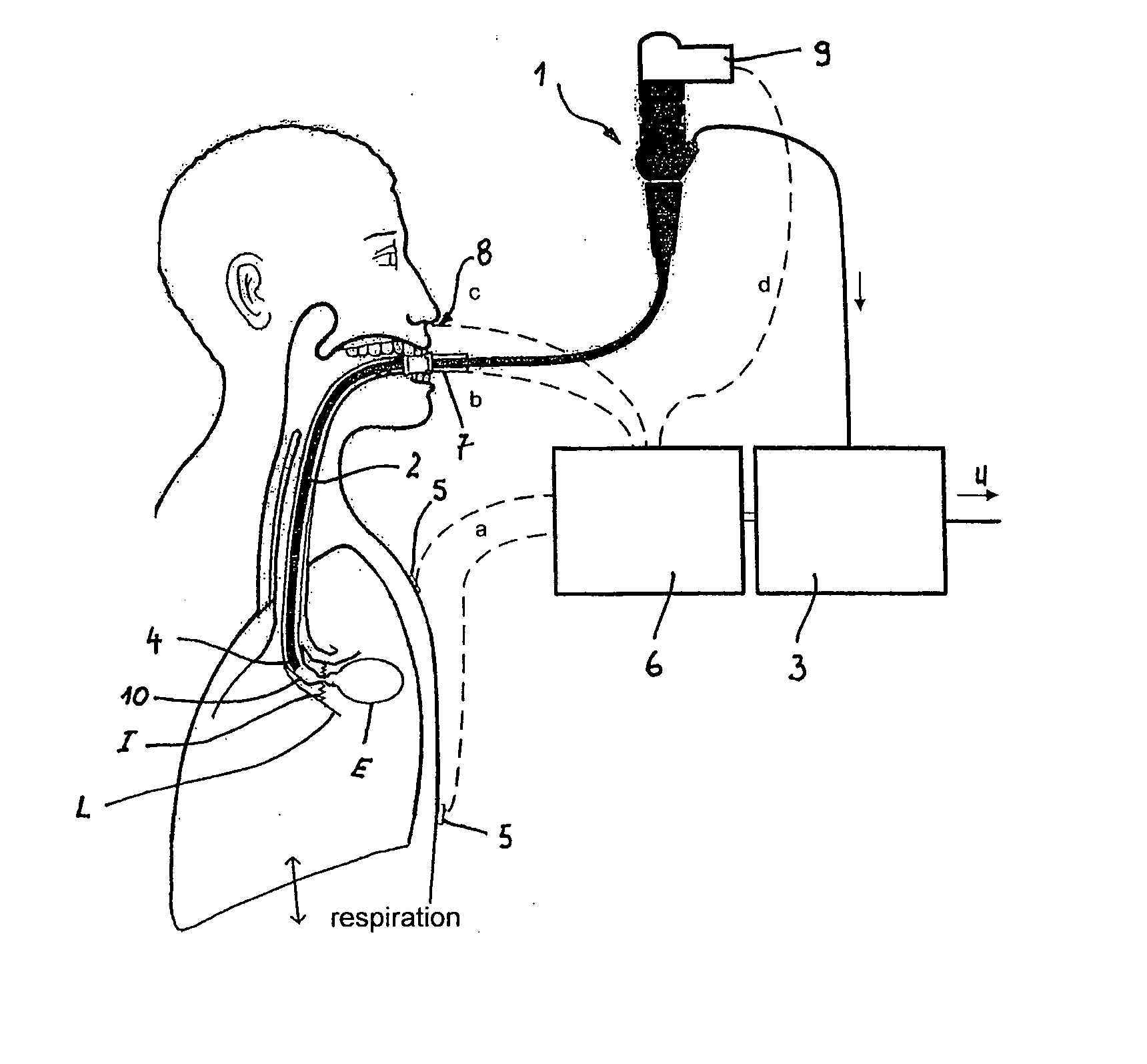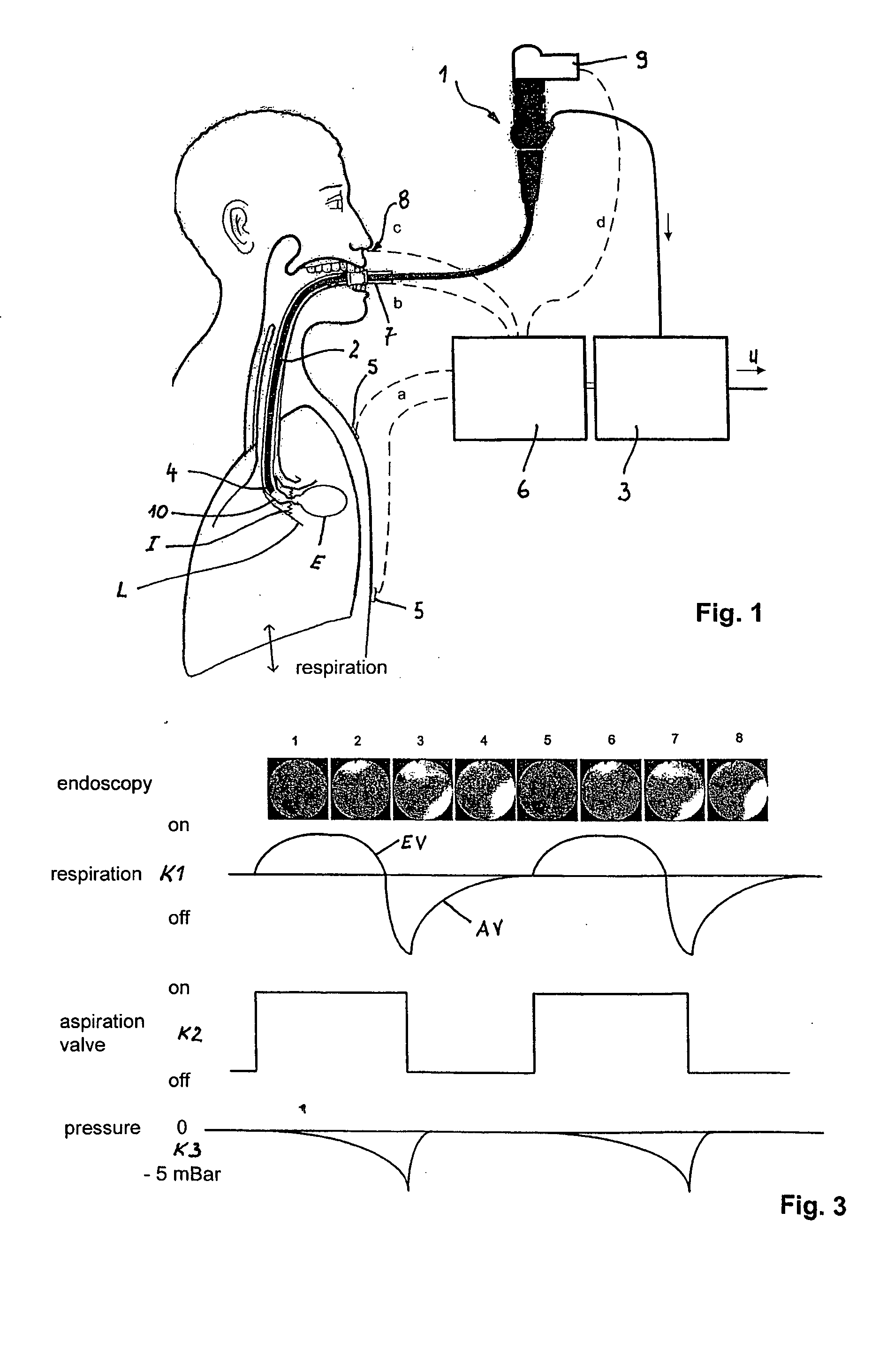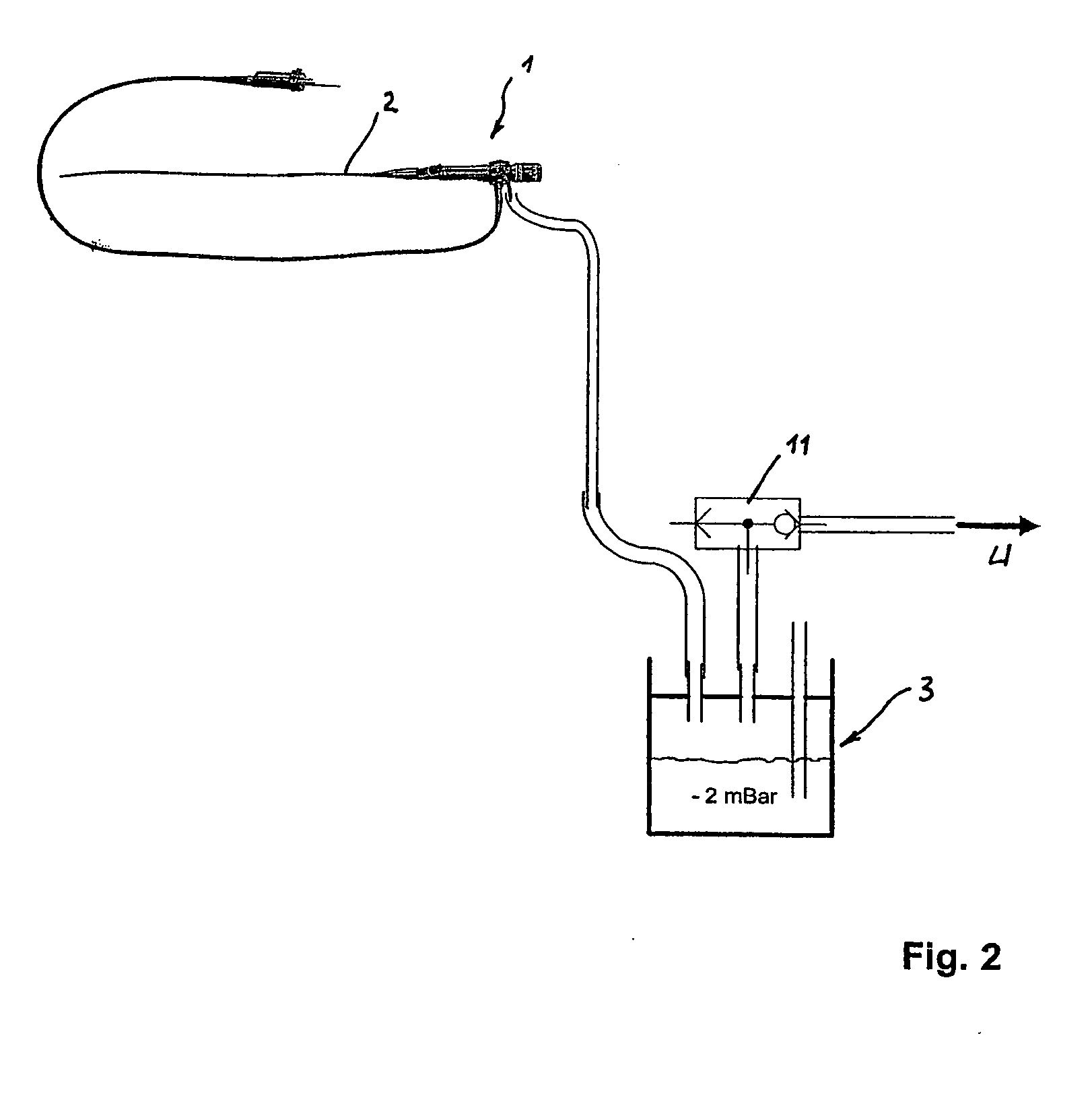Method and arrangement for reducing the volume of a lung
a technology of lung volume and arrangement, applied in the direction of respirator, respirator, fire rescue, etc., can solve the problem of short pressure peak
- Summary
- Abstract
- Description
- Claims
- Application Information
AI Technical Summary
Benefits of technology
Problems solved by technology
Method used
Image
Examples
Embodiment Construction
[0027]FIG. 1 shows a diagrammatic representation of an arrangement according to the invention for reducing the volume of a lung L of a patient, who suffers from pulmonary emphysema, during treatment. The lung area affected by the emphysema is designated by E. The basic structure of the arrangement can be seen from FIG. 2.
[0028] The arrangement comprises a bronchoscope 1 with a bronchial catheter 2 which communicates with an aspiration device 3. The bronchial catheter 2 is introduced into the hyperexpanded lung area. There, the distal end 4 of the bronchial catheter 2 can be sealed off relative to the surrounding vessel wall by means of suitable blockers (not shown here). Sensors 5 secured on the patient's chest record the patient's spontaneous respiration by measuring the thorax impedance. The measurement values recorded by the sensors 5 are evaluated by computer in a control unit 6, forming a component part of the aspiration device, 3 and are used for controlling the aspiration pr...
PUM
 Login to View More
Login to View More Abstract
Description
Claims
Application Information
 Login to View More
Login to View More - R&D
- Intellectual Property
- Life Sciences
- Materials
- Tech Scout
- Unparalleled Data Quality
- Higher Quality Content
- 60% Fewer Hallucinations
Browse by: Latest US Patents, China's latest patents, Technical Efficacy Thesaurus, Application Domain, Technology Topic, Popular Technical Reports.
© 2025 PatSnap. All rights reserved.Legal|Privacy policy|Modern Slavery Act Transparency Statement|Sitemap|About US| Contact US: help@patsnap.com



